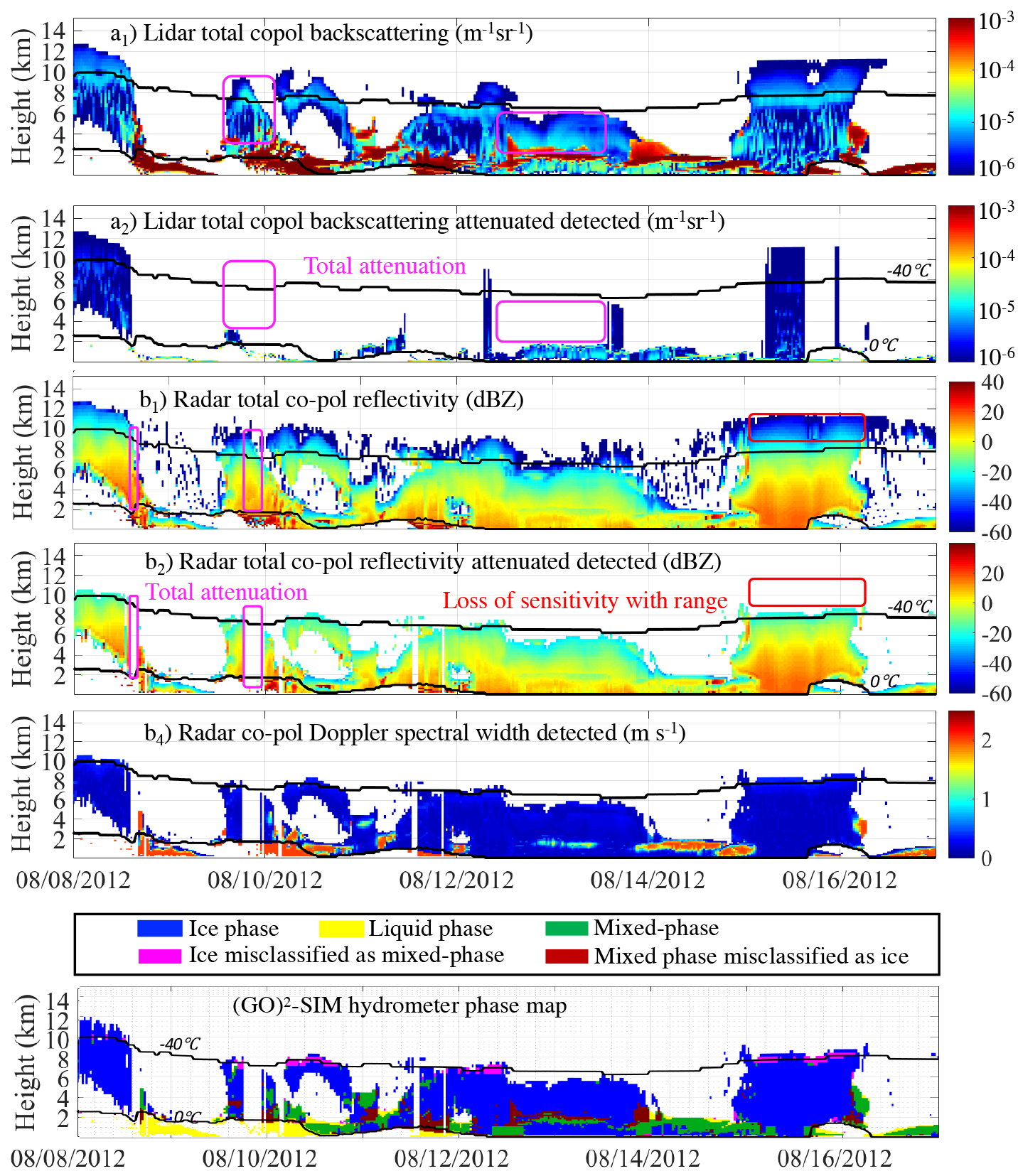(GO)2-SIM: A ground-based forward simulator to evaluate hydrometeor phase profiles in a climate model
Submitter:
Lamer, Katia — Brookhaven National Laboratory
Fridlind, Ann M. — NASA - Goddard Institute for Space Studies
Area of research:
General Circulation and Single Column Models/Parameterizations
Journal Reference:
Science
To evaluate how well large-scale models simulate liquid and ice cloud and precipitation occurrence frequencies, we constructed a tool to transform the cloud and precipitation properties simulated in a large-scale model into observable quantities that are measured by vertically pointing radars and lidars. Because measured quantities still do not allow us to absolutely distinguish where liquid and ice are present, we also implemented and evaluated the same classification algorithm applied to both model output and measured quantities, allowing for equivalent definitions of ice-dominated, liquid-dominated, or mixed-phase conditions.
Impact
Using a forward simulator capable of emulating sensor capabilities and implementing a common water-phase classification algorithm will enable us to more readily attribute discrepancies between model-simulated and observed cloud and precipitation phase to model bias rather than methodological bias.
Summary
To objectively evaluate the occurrence of liquid and ice water in single- and multi-layer hydrometeor systems produced by the ModelE3 climate model, we addressed several factors that differentiate ModelE3 output and ARM observations. We constructed a forward simulator to transform simulated hydrometeor mass-weighted properties to Ka-band zenith radar (KAZR) and micropulse lidar (MPL) backscattering-based observables. Owing to known limitations of model outputs for forward calculation of observables from first principles, we elected to use empirical relationships to estimate observables from basic model variables. To assess uncertainty in this process, an ensemble of 576 forward simulations was generated using multiple water-content-to-backscattering relationships, which propagated to no more than 4% uncertainty in overall hydrometeor frequency of occurrence. We also showed that, by considering instrument detection capabilities in forward simulations, it is possible to objectively determine which hydrometeor-containing model grid cells are comparable to observations, bypassing the need to arbitrarily filter trace amounts that may be numerical noise. Using a forward-simulator framework allowed us to evaluate a hydrometeor-phase retrieval based on depolarization lidar and Doppler radar observables in which only 8% unphysical classifications were diagnosed when using ModelE3 output itself as truth, primarily attributable to regions of signal attenuation. Applying the same water-phase classification to both forward-simulated and observed fields reduces methodological bias in the comparison of model output and observations for a fairer evaluation.


